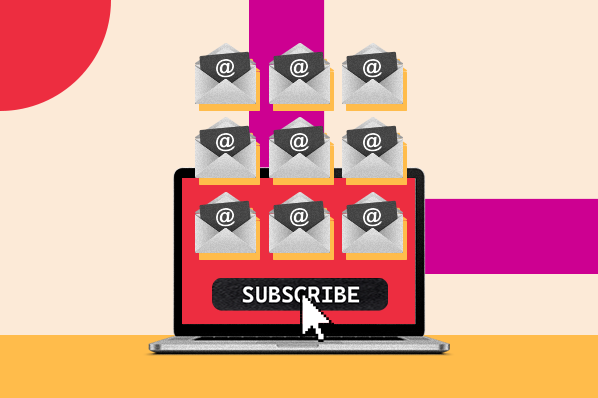15 Proven Ways to Build Your Email List From Scratch

▼ Summary
– Building an email list from scratch is achievable without a product or paid ads by using straightforward tactics like waitlists and personal outreach.
– A valuable email list requires explicit opt-ins, valid addresses, engaged subscribers, easy segmentation, and consistent growth with quality control.
– Effective tactics include creating waitlists for early access, sending personal notes to networks, and developing lead magnets that solve specific problems.
– Personal engagement with new subscribers, helpful pop-ups, and matching CTAs to content can significantly boost list growth and engagement.
– Additional strategies involve guest posting, leveraging existing networks, creating topic-specific landing pages, and turning engaged subscribers into recruiters.
Building an email list from the ground up offers a direct line to your audience, free from the whims of algorithms or platform changes. It’s a powerful asset that allows you to cultivate lasting relationships with people who genuinely want to hear from you. Whether you’re just starting out or looking to refine your approach, these proven strategies can help you grow a high-quality list that delivers real value.
A truly valuable email list isn’t just a collection of addresses, it’s a curated community. Every subscriber should have explicitly opted in, as purchased lists damage trust and deliverability. Keeping your list clean with valid, engaged contacts ensures better performance. Focus on attracting the right audience, people who are genuinely interested in what you offer, and make it easy to segment them based on behavior or preferences. Growth matters, but quality always trumps quantity.
One of the simplest ways to kickstart your list is by creating a waitlist, even before you have a finished product. A single compelling landing page that promises early access can attract hundreds of signups. Promote it everywhere: social media, speaking engagements, and direct messages. This approach builds anticipation and gives you a head start.
Don’t underestimate the power of your personal network. Sending a brief, personalized email to friends or colleagues can generate early momentum. These initial subscribers often become your most engaged supporters, offering feedback and even referrals.
Create a lead magnet that solves one urgent problem for your audience. Avoid overwhelming guides; instead, offer something practical like a template, checklist, or quick tutorial. Promote it wherever your ideal audience spends time, and keep the signup form simple, just an email address to start.
Use progressive profiling to gather more information over time. Ask for minimal details upfront, then gradually request additional data through follow-up emails or confirmation pages. This approach respects the user’s time while still providing you with valuable segmentation insights.
Publishing one standout piece of content each month can significantly boost signups. Whether it’s a detailed case study, a contrarian take, or a practical tutorial, make it something people want to share. Always include a clear call-to-action inviting readers to join your list for more insights.
Personal engagement makes a difference. For your first thousand subscribers, consider sending a personal thank-you note. This human touch can lead to meaningful conversations and loyal followers. Even as your list grows, maintain a warm, value-driven welcome sequence.
Pop-ups don’t have to be annoying. When used thoughtfully, like exit-intent or scroll-triggered overlays, they can effectively capture leads. Gamified elements like spin-to-win wheels can dramatically increase conversion rates, especially when the offers are genuinely useful.
Tailor your calls-to-action to match the content your visitors are reading. A relevant CTA performs far better than a generic one. Use analytics to identify high-traffic pages and customize your messaging accordingly.
Free workshops or demos are excellent for attracting high-intent subscribers. Keep them simple and focused on solving a specific problem. Attendees who opt into your list are already primed to engage with your content.
Guest posting on relevant blogs or appearing on podcasts can quickly expand your reach. Include a clear byline or signup link in show notes to capture interested listeners or readers.
Engaging in comments on platforms like LinkedIn or Twitter can also build visibility. Offer valuable insights without being promotional, and people will naturally want to learn more from you.
If you sell products or services, add an optional checkbox at checkout for email updates. These subscribers often show higher engagement since they’ve already demonstrated interest.
Leverage your existing networks, no matter how small. Mention your list in social bios, email signatures, or casual conversations. The people who already know you are often the easiest to convert.
Create dedicated landing pages for different topics or campaigns. This allows you to speak directly to the interests of various audience segments, improving relevance and conversion rates.
Encourage your most engaged subscribers to share your content. Include a forward-friendly link in your emails, and consider offering small incentives for successful referrals. This turns your audience into active recruiters.
Several tools can support your list-building efforts. HubSpot offers comprehensive email and landing page tools, while Mailchimp provides user-friendly templates and automation. Constant Contact is great for drag-and-drop email design, and GetResponse includes advanced segmentation features. Optimonk specializes in pop-ups and lead capture, with a free plan available for those on a budget.
Ultimately, building an email list is about consistently delivering value and fostering trust. Start small, focus on quality, and keep experimenting. Your first hundred subscribers can become your most valuable advocates, helping you grow organically over time.
(Source: HubSpot Marketing Blog)



